Are you considering upgrading your basement and transforming it into a functional and inviting space? One crucial aspect to consider is the type of flooring that suits this unique environment. In this article, we will explore the world of wood flooring options for basements and shed light on why selecting the right flooring is vital for this particular area of your home.
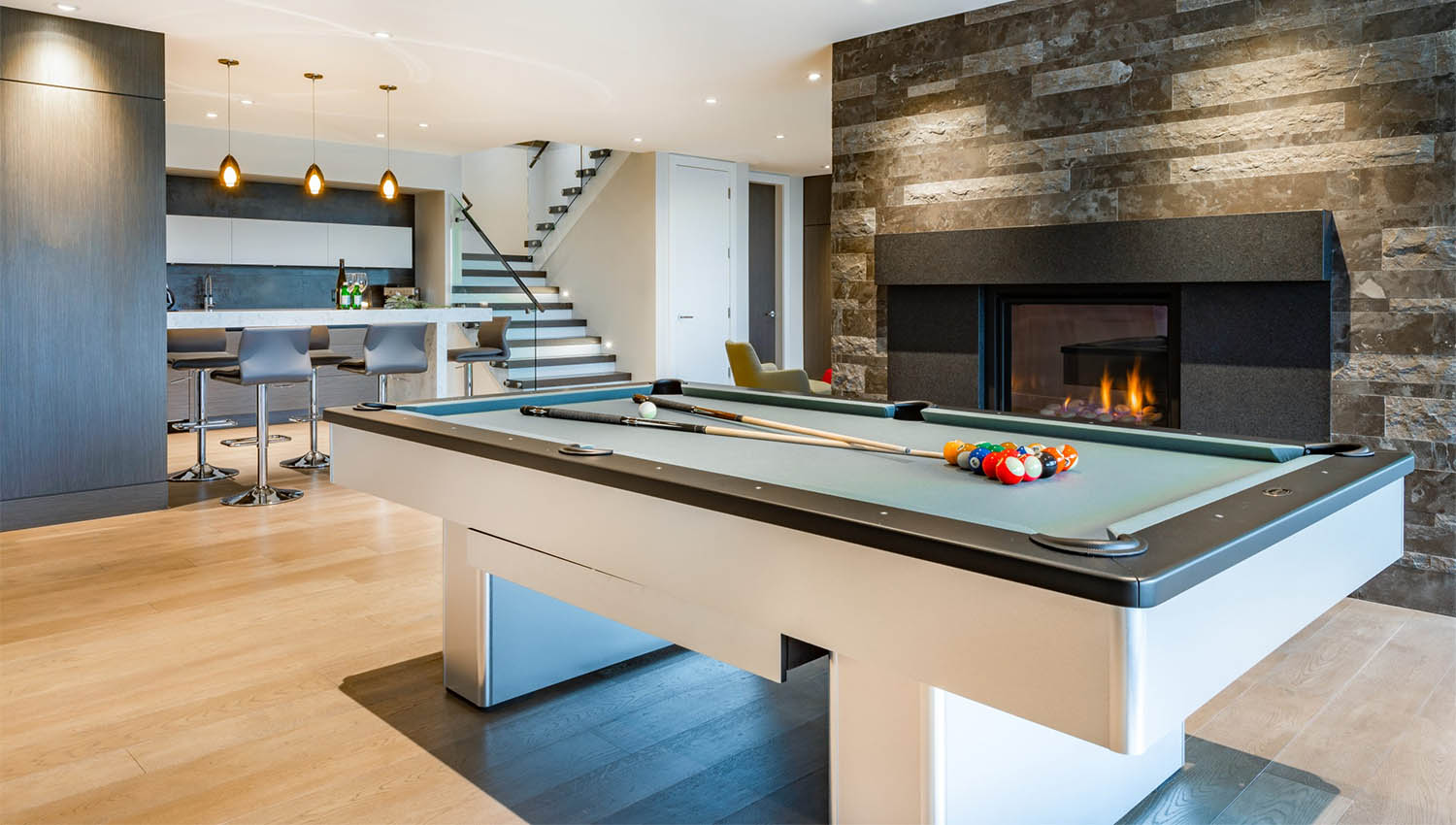
Basements often present different challenges compared to other areas of the house due to factors like moisture, temperature fluctuations, and potential water seepage. Therefore, it is essential to make an informed choice when it comes to selecting flooring materials. By choosing the right wood flooring for your basement, you can create a beautiful, durable, and comfortable space that complements the overall aesthetic of your home.
Join us as we delve into the world of wood flooring for basements and uncover the key factors you should consider when making this crucial decision. Whether you are looking for engineered wood flooring or solid wood options, we will guide you through the selection process, ensuring that you make an informed choice that meets your style preferences and addresses the unique challenges of your basement environment.
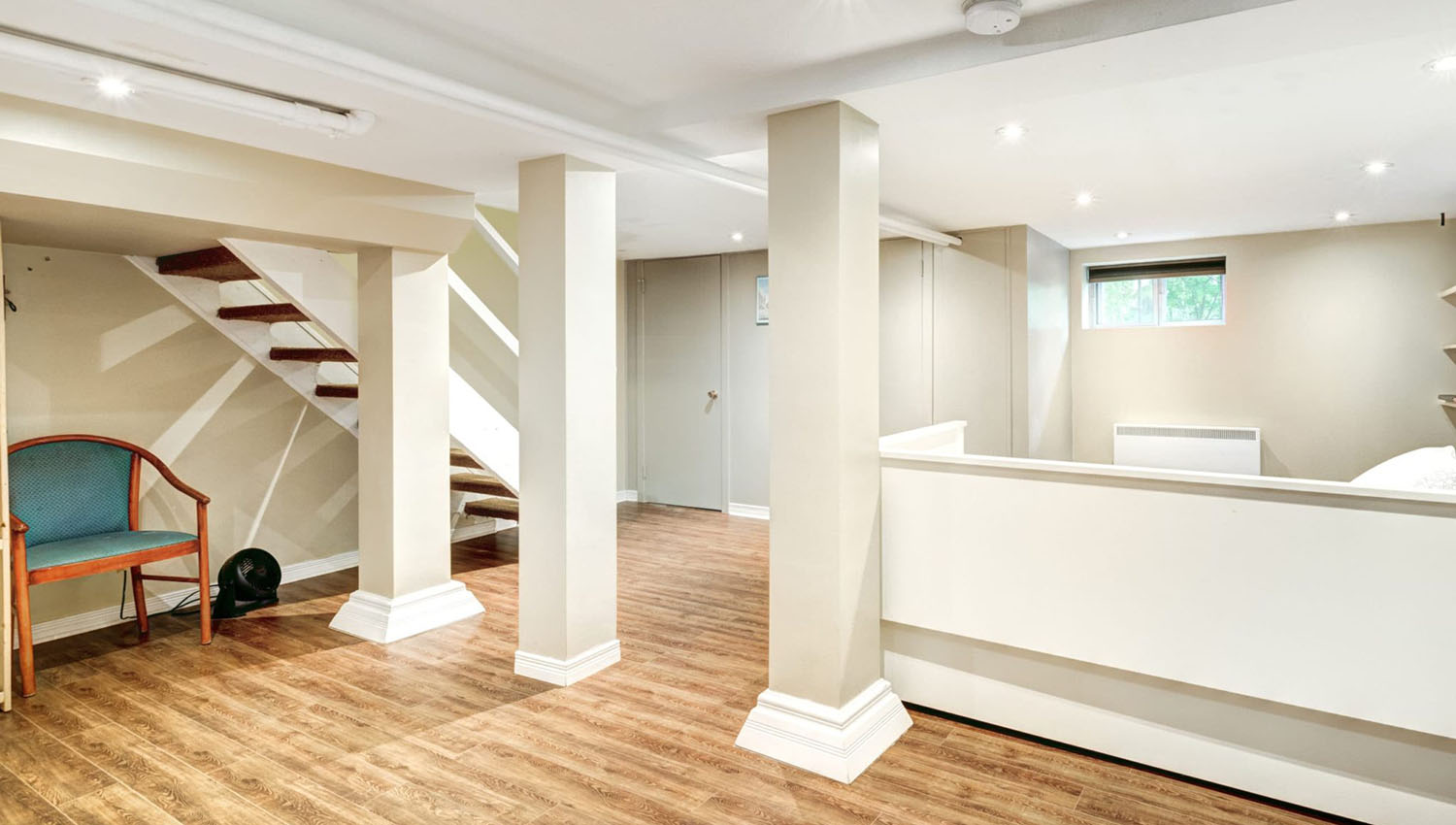
When it comes to basement flooring options, wood flooring stands out for its numerous advantages. Let's explore some of the key benefits that make wood flooring an excellent choice for basements:
Wood flooring brings a touch of natural beauty and warmth to any space. Its rich grains, unique patterns, and various wood species offer a wide range of aesthetic options to suit your personal style and complement your basement's design. Whether you prefer a classic, rustic, or contemporary look, wood flooring can be customised to match your vision.
Wood flooring provides a comfortable underfoot experience, adding a cosy and inviting atmosphere to your basement. Unlike cold and hard surfaces like concrete or tile, wood flooring offers a softer feel and retains warmth, making your basement a more comfortable living space.
With proper installation and maintenance, wood flooring can withstand the test of time. Engineered wood flooring, in particular, is designed to handle the unique challenges of basement environments, including moisture and temperature fluctuations. It features a stable layered construction that minimises the potential for warping or shifting, ensuring long-term durability.
Installing wood flooring in your basement can significantly enhance the value of your home. Potential buyers appreciate the timeless appeal and durability of wood flooring, making it a desirable feature that can set your property apart in the real estate market.
By choosing wood flooring for your basement, you not only elevate the visual appeal and comfort of the space but also increase its overall value. The natural beauty, warmth, and versatility of wood flooring make it a compelling choice for transforming your basement into a functional and captivating area of your home.
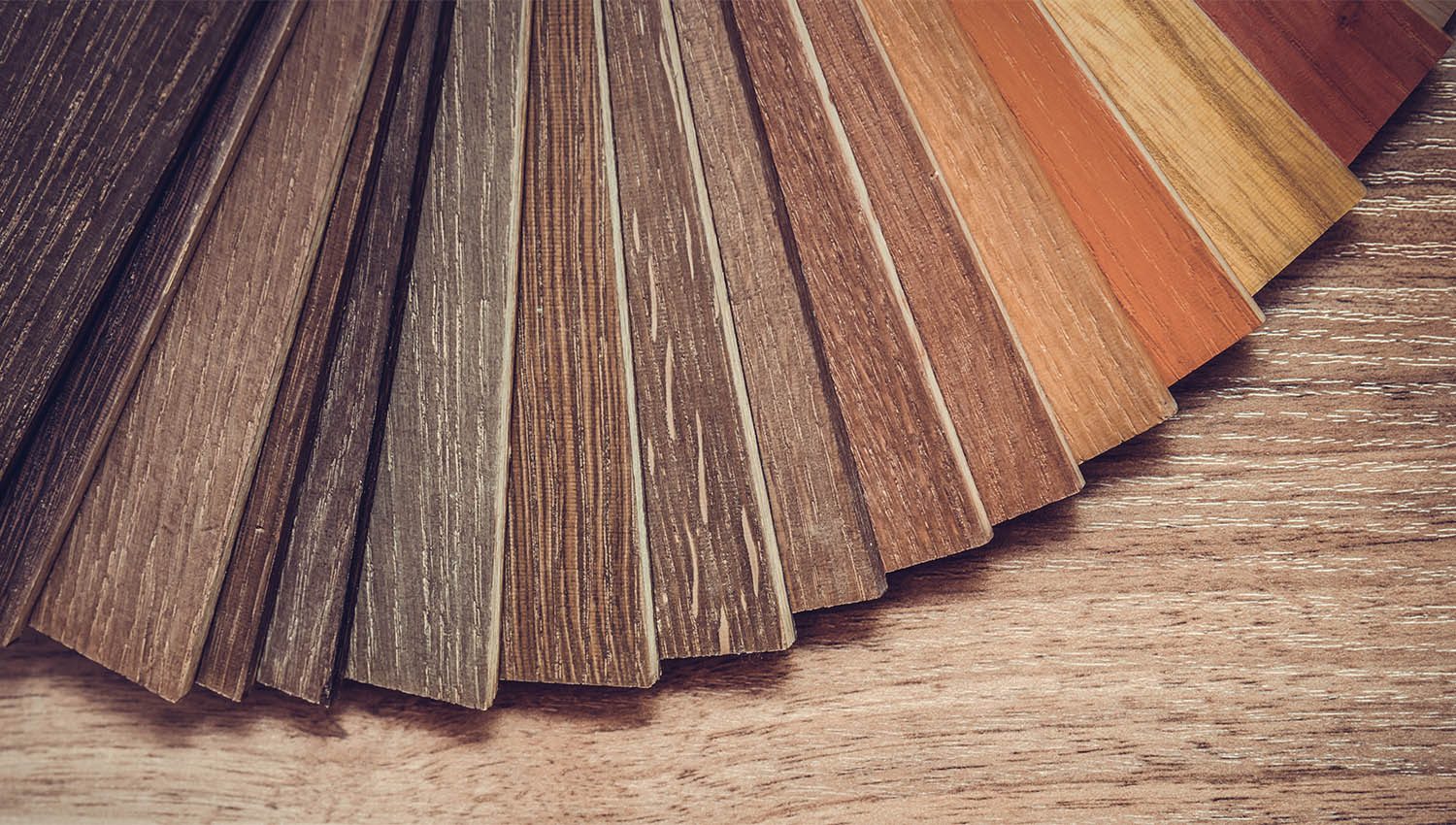
Choosing the right wood flooring for basements requires careful consideration of several factors. Two key considerations are moisture resistance and durability. Additionally, proper installation and maintenance play a significant role in ensuring the longevity and performance of the flooring.
Basements are prone to higher moisture levels, so it's crucial to select wood flooring that can withstand these conditions. Look for wood flooring options that have excellent moisture resistance properties. Engineered wood flooring, with its layered construction and moisture-resistant finishes, is a popular choice for basements. It offers better stability and durability compared to solid wood flooring, reducing the risk of warping, cupping, or moisture-related damage.
Basements can experience higher foot traffic and potential impacts from moisture or occasional flooding. Therefore, choose wood flooring that is durable and can withstand these challenges. Consider the hardness and strength of the wood species. Hardwoods like oak, maple, or hickory are often preferred for their durability. Additionally, the protective finish applied to the wood flooring plays a crucial role in enhancing its resistance to wear, scratches, and stains.
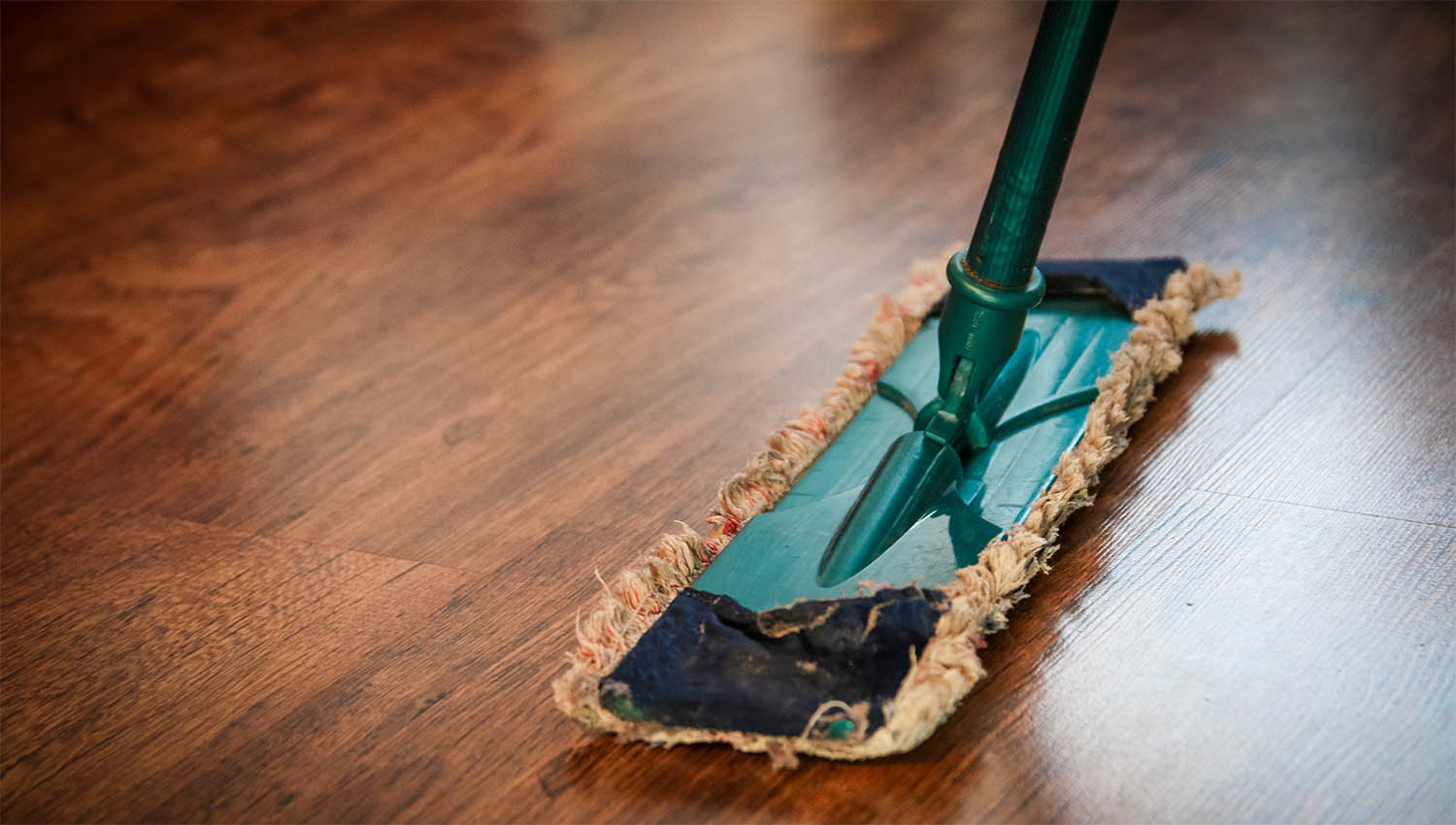
Proper installation is essential for ensuring the longevity and performance of wood flooring in basements. Moisture barriers, such as a quality underlayment or vapour barrier, should be installed to minimise moisture infiltration from the concrete subfloor. It's also crucial to follow the manufacturer's guidelines for acclimation, installation methods and recommended adhesives or fasteners.
Regular maintenance is important to preserve the appearance and integrity of wood flooring in basements. Promptly clean up any spills or moisture, as prolonged exposure to water can cause damage. Use recommended cleaning products and techniques to avoid harming the finish or the wood. Additionally, maintain a consistent humidity level in the basement to prevent excessive moisture-related issues.
By considering moisture resistance, durability, proper installation, and maintenance, you can choose wood flooring that will withstand the basement environment and provide long-lasting beauty and functionality.
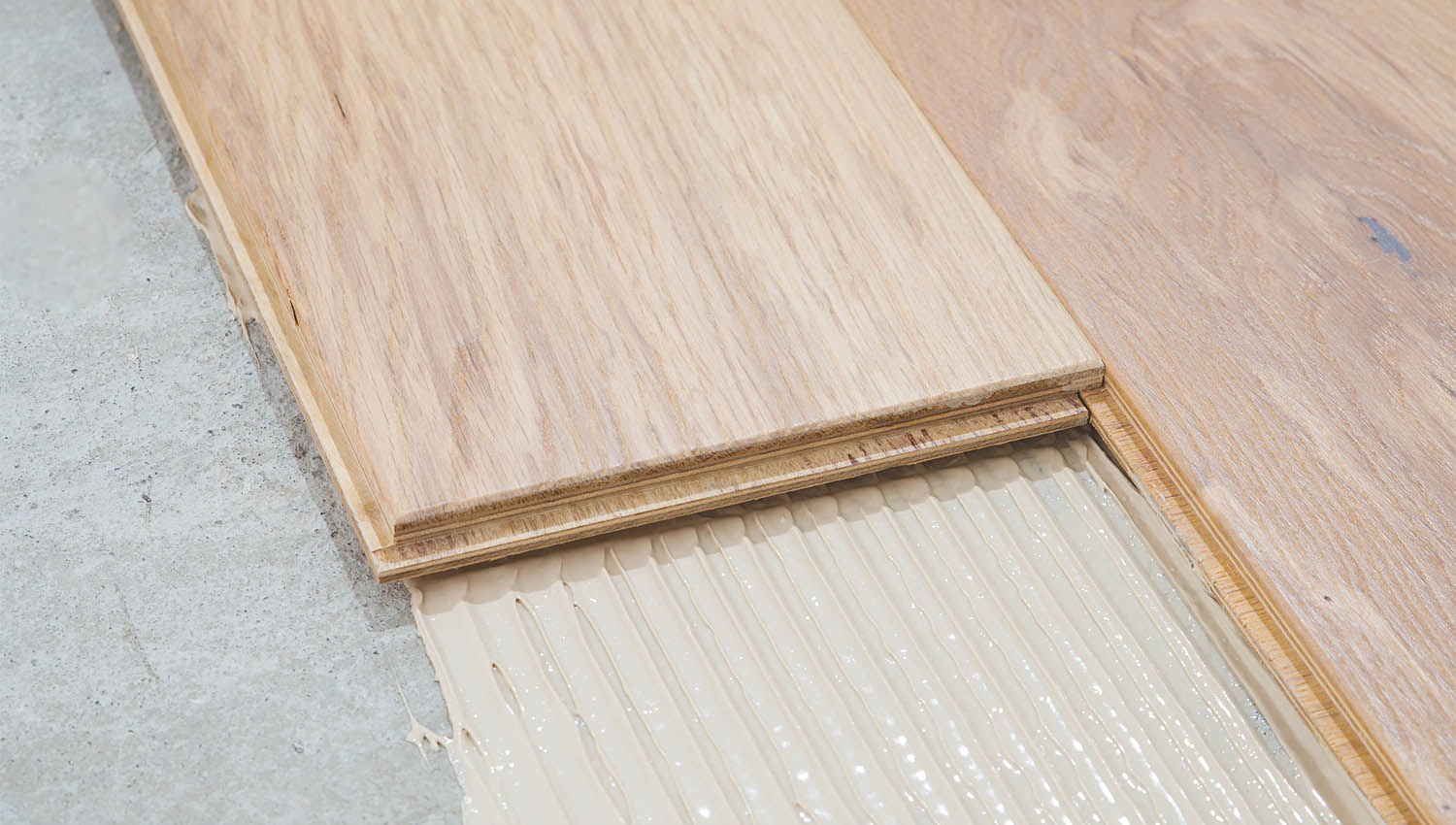
Engineered wood flooring is a top choice for basements due to its unique features and benefits. With its layered construction and resilience to moisture and temperature fluctuations, it offers a reliable and stylish flooring solution.
The layered construction of engineered wood flooring provides exceptional stability, minimising the risk of warping or shifting caused by moisture and temperature changes in the basement environment. This stability makes it a durable option for long-term use.
Compared to solid wood flooring, engineered wood handles moisture and temperature fluctuations in basements with greater resilience. The layered structure reduces the likelihood of gaps, buckling, or cupping, ensuring the integrity of the floor over time.
In addition to its practicality, engineered wood flooring offers a wide range of styles, finishes, and wood species, allowing you to achieve the desired aesthetic for your basement. Whether you prefer a classic or modern look, there is an engineered wood option to suit your style.
When selecting flooring for your basement, consider the durability, resilience, and design options provided by engineered wood flooring. It combines the beauty of natural wood with the practicality required for basement environments.
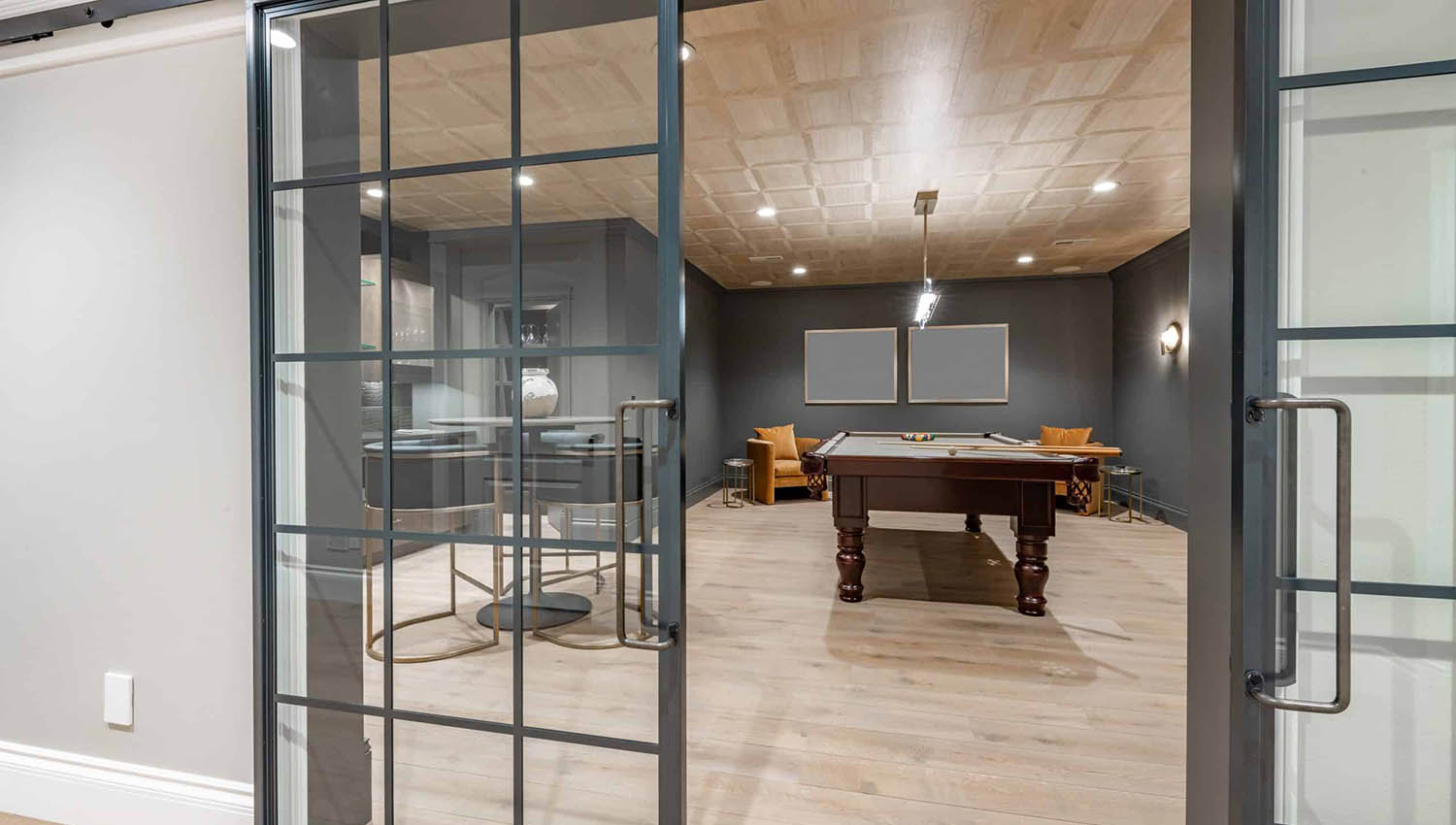
Solid wood flooring can offer a timeless and elegant look for basements, but it comes with its own set of considerations. Here, we'll discuss the pros and cons of using solid wood flooring in basements and highlight important factors for successful installation and maintenance.
Natural Beauty: Solid wood flooring exudes natural warmth and beauty, adding a touch of elegance to any basement space. Its authentic grain patterns and rich colours can create a welcoming and inviting atmosphere.
Durability: Solid wood flooring is known for its durability and longevity. With proper care, it can withstand heavy foot traffic and last for generations.
Moisture Sensitivity: Solid wood is more susceptible to moisture damage compared to engineered wood flooring. Basements, being prone to moisture issues, can pose a challenge for solid wood flooring. High humidity levels and occasional water seepage can lead to warping, cupping, and other forms of damage.
Limited Installation Options: Solid wood flooring is typically installed using nail-down or glue-down methods, which can be more time-consuming and require a stable and dry subfloor. Basements with concrete subfloors may require additional preparation, such as installing moisture barriers and using specialised adhesives.
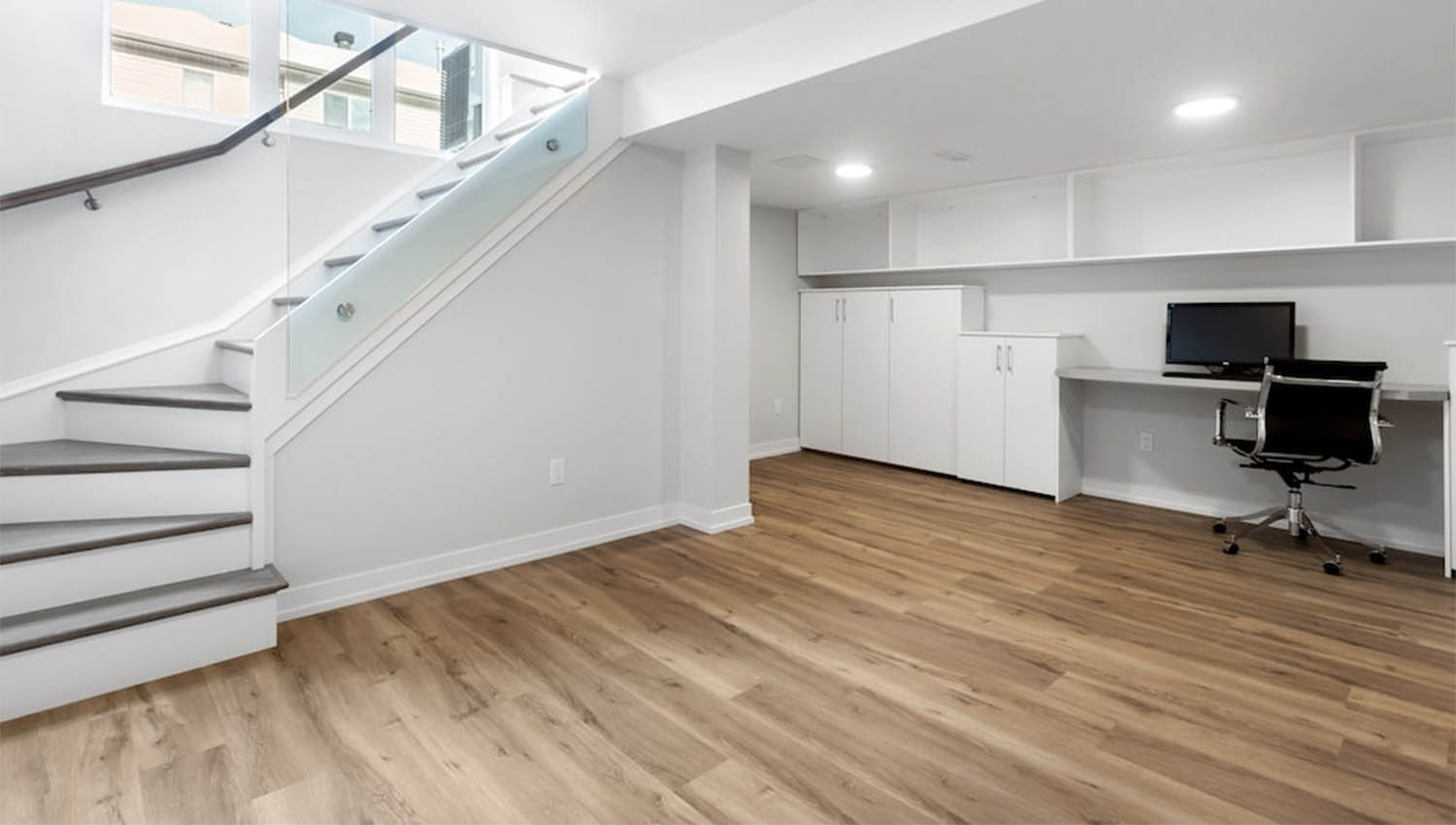
To successfully install solid wood flooring in basements, proper moisture barriers are essential. Installing a vapour barrier or moisture barrier between the concrete subfloor and the wood flooring helps prevent moisture from reaching the wood. This can be in the form of a plastic or foam underlayment.
Additionally, follow manufacturer guidelines and recommendations for installation techniques specific to solid wood flooring. Ensure the basement is properly prepared, with a level and moisture-free subfloor, before beginning the installation process.
Regularly monitoring and maintaining humidity levels in the basement is crucial when using solid wood flooring. Excessive humidity can lead to wood expansion, while overly dry conditions can cause shrinkage. Using a dehumidifier or humidifier, depending on the needs of your specific basement environment, can help regulate humidity levels and minimise potential damage to the wood flooring.
While solid wood flooring can add beauty and durability to basements, it's important to consider the moisture sensitivity, proper installation techniques, and ongoing maintenance required to ensure its longevity.
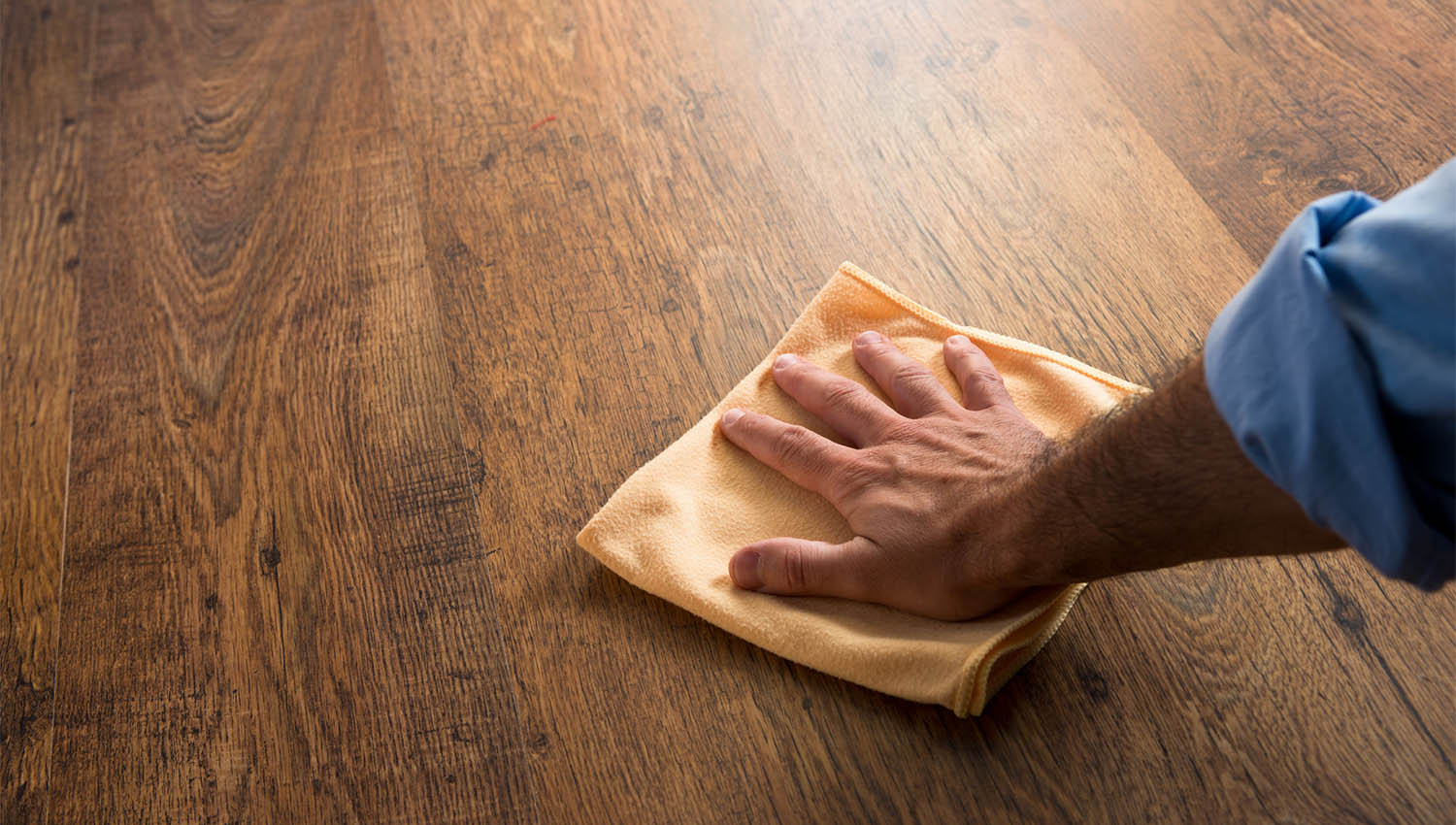
To ensure a successful and long-lasting wood flooring installation in basements, follow these guidelines and maintenance tips:
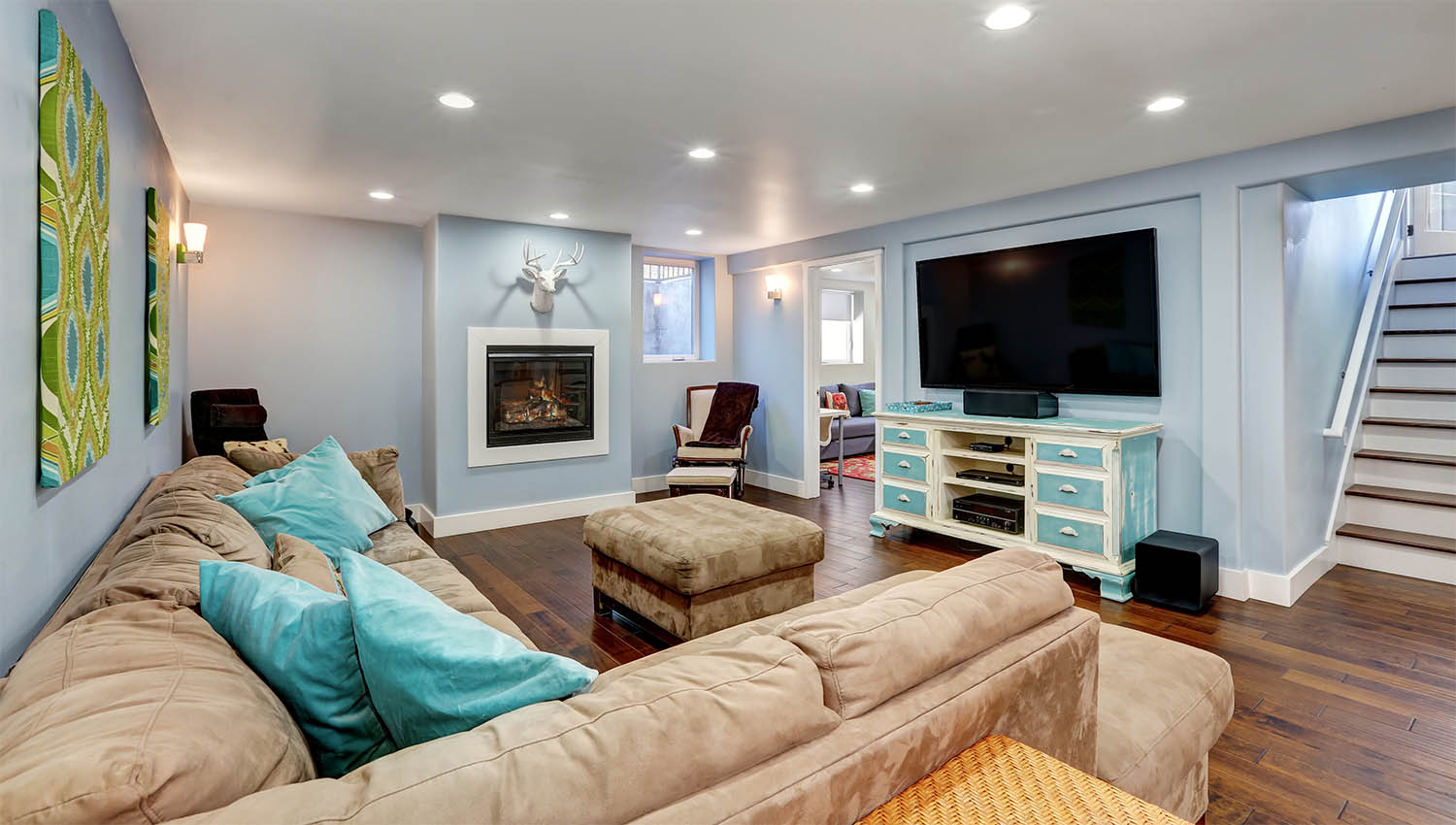
When it comes to transforming your basement into a functional and inviting space, selecting the right wood flooring goes beyond practicality—it also allows you to unleash your creativity and enhance the overall design aesthetic. Here are some design possibilities to consider when choosing wood flooring for your basement:
Opting for lighter wood tones can create a sense of airiness and openness in your basement. Light wood flooring, such as blonde oak or ash, reflect more natural light, making the space feel brighter and more spacious. This is particularly beneficial if your basement has limited natural light sources. Lighter wood flooring also pairs well with various interior design styles, from contemporary to Scandinavian, adding a touch of modern elegance to your space.
If you're looking to create a warm and cosy atmosphere in your basement, darker wood tones can be an excellent choice. Deep, rich shades like mahogany, walnut, or espresso can add a sense of depth and sophistication to the space. Dark wood flooring can create a cosy ambience, making your basement feel inviting and snug. This aesthetic works well in basement spaces designed for relaxation, such as home theatres, game rooms, or lounges.
For those seeking a touch of elegance and visual interest, consider using chevron or herringbone patterns in your basement wood flooring. These parquet designs involve arranging the wood planks in a distinctive zigzag or geometric design, adding a unique and sophisticated element to the space. Chevron and herringbone patterns can elevate the overall aesthetic of your basement, making it feel luxurious and visually captivating. These designs work well in various areas, including entryways, home offices, or even dining areas within the basement.
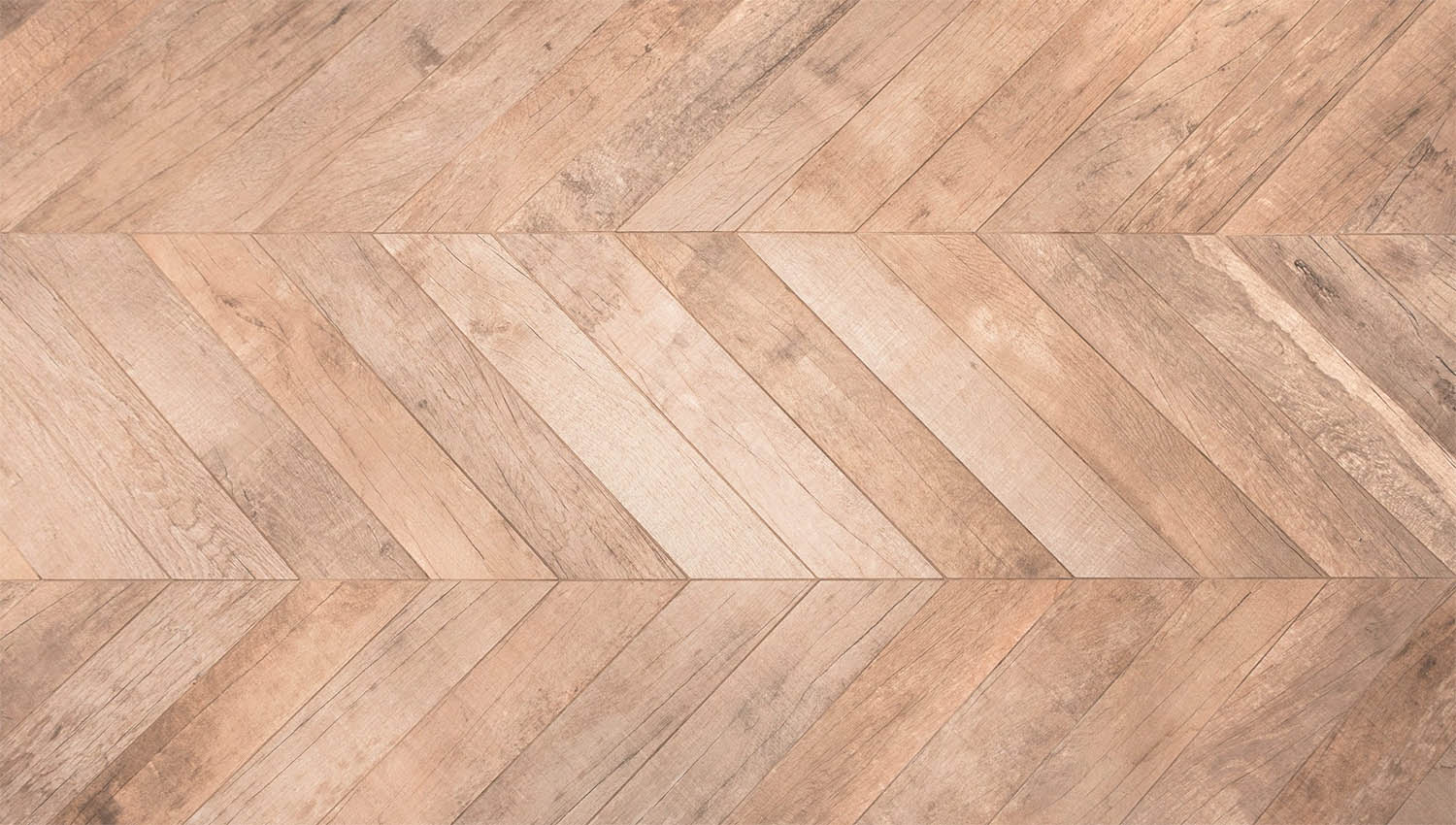
To truly personalise your basement space, consider custom patterns and borders in your wood flooring design. You can create unique focal points or define separate areas within the basement by incorporating custom patterns or borders. From intricate inlays to geometric designs, the possibilities are endless. Custom patterns and borders allow you to showcase your personal style and make a bold statement in your basement. With our bespoke services, you can collaborate with our skilled craftsmen to create unique patterns and borders that reflect your individual style and vision.
Remember, the design possibilities for your basement wood flooring are limitless. Consider your personal style, the overall aesthetic of your home, and the function of your basement space when choosing the right design. Whether you prefer a minimalist and contemporary look or a classic and traditional style, there is a wood flooring design that will complement your vision and enhance the beauty of your basement.
Explore our wood flooring range to find the perfect solution that matches your vision and meets your basement's unique requirements. Contact us today and let us help you make your basement a stunning and personalised space.
Our new brochure is packed full of hundreds of new products, creative design solutions and inspirational flooring ideas.
DOWNLOAD BROCHURE (PDF)We recommend booking in advance before your visit
JackEvie Floor Collections
Unit 21, Calibre Industrial Park,
Laches Close, Four Ashes,
Wolverhampton WV10 7DZ
| Monday | 9:00am – 4:00pm |
| Tuesday | 9:00am – 4:00pm |
| Wednesday | 9:00am – 4:00pm |
| Thursday | 9:00am – 4:00pm |
| Friday | 9:00am – 4:00pm |
| Saturday | Closed |
| Sunday | Closed |